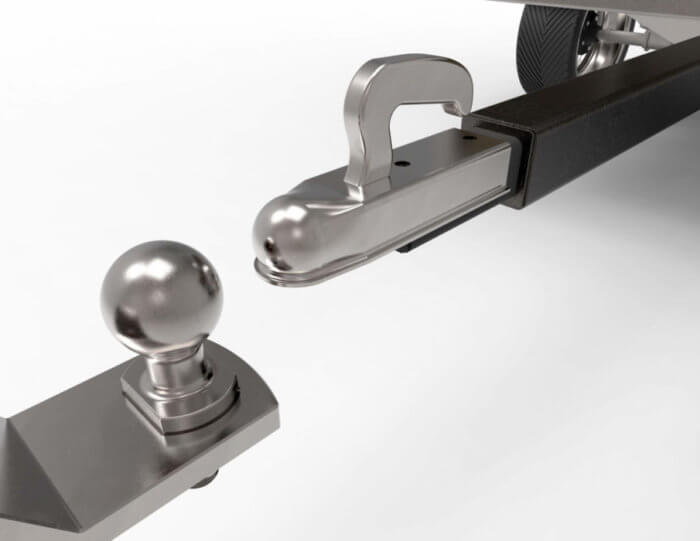In many parts of Canada, the warm weather signals the start of the trailer towing season. From Recreational Vehicles to tent trailers and all sizes of boats, towing is often part of our summer plans. While trailer towing can be a great way to bring additional toys with you on vacation, the connection between the vehicle and the trailer needs to be done right to ensure safe trailering.
In order to ensure you arrive at your destination with everything you started with, here are three areas to consider when getting ready to tow your toys.
1 – Receiver-ball size

The first issue that needs to be considered is the compatibility of the receiver on the trailer and the ball on the towing vehicle. The most common size of trailer balls are 1 7/8” and 2”, with heavier duty applications being 2 5/16” or 3”. The most important aspect is to ensure you use an appropriate size ball on your vehicle in relation to the receiver on the trailer. In most cases, smaller receiver will not fit over a larger diameter ball, but a larger receiver will fit over a smaller diameter ball. If the receiver and ball are not the same size, this can increase the risk of the trailer disengaging from the ball while in motion, which can lead to catastrophic consequences.
The size of the ball and receiver will be stamped on both components. If these stampings are obscured, normally a good cleaning will reveal them. If not, consider getting those components replaced.
2 – Engage the locking lever
In order to ensure the receiver is safely placed over the ball, the locking lever must be engaged. Once this is engaged, most levers can also be secured with a lock of some sort. This needs to be safely engaged for the same reason the receiver size needs to be the correct size – if not, the receiver may come off the ball as you are travelling to your destination. Using a key or a combination lock can also be helpful – not only will this secure your trailer when you aren’t around, but it will also make sure that the locking lever is properly engaged. The directions for how to effectively install a lock should be in your trailer owner’s manual.
3 – Proper safety chain installation.
Once the receiver is properly placed, and the locking lever is fully engaged, you need to ensure that the safety chains are also correctly connected. There are several purposes for the safety chains, but one of the primary purposes is to prevent the tow bar of the trailer from contacting the ground if the trailer happens to come loose. This is law in all jurisdictions in Canada.
There is a range of designs for safety chains, although the most common is a crossed chain type design. This design requires that the safety chains are crossed to prevent the tow bar from contacting the ground. Since there is a range of trailer hitch and trailer designs, you may need to ensure that your safety chains are compatible with your hitch. This can be safely done by lowering your trailer onto the safety chains and ensuring that the tow bar does not touch the ground.
As Collision Reconstruction Engineers, we have seen the devastating consequences of trailers coming loose. Runaway trailers are incredibly frightening, and often cause catastrophic collisions. We have also seen situations where the safety chains were not suitable for that vehicle, and the tow bar of the vehicle dug into the pavement. If the trailer is light enough, inappropriate safety chains can cause the trailer to flip onto the towing vehicle, which is a horrendous accident. If the trailer is heavier, the components are torn apart, and a runaway trailer ensues regardless.
Fortunately, many of these collisions are avoidable. Paying attention to the above areas will help ensure your trailer stays safely attached to your vehicle while driving, and will help keep yourself and other road users safe.
Stay safe this summer, and happy trailering!
For more information on this topic, please contact one of our Collision Reconstruction experts at 877 686-0240 or info@cep-experts.ca.
